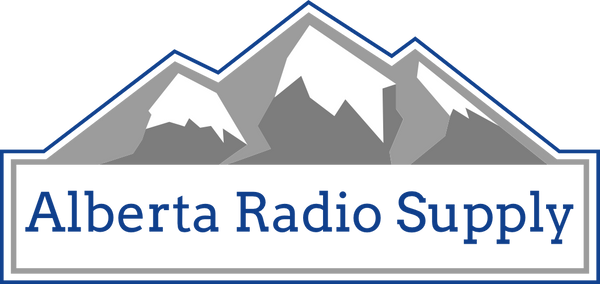
Common CB Radio Troubleshooting Tips and Solutions
Share
In an age where modern communications are dominated by smartphones and 5G networks, there's a timeless charm to the allure of CB radios. For enthusiasts, professionals, and hobbyists, these radios are more than just devices; they are a throwback to simpler times when man and machine communicated through a fiat bond of frequency waves. However, like all technology, CB radios experience issues, sometimes leaving users in static instead of chatter. Here, we dive into the core of common CB radio troubleshooting, exploring key relationships and connections.
In this article, we will thoroughly examine the common troubleshooting tips and solutions for CB radios. We'll navigate through common issues like power loss, high SWR, and static, tackle each problem with expert-backed solutions, and underscore the importance of regular maintenance.
Table of Contents
- Power Loss and Connectivity Issues
- High SWR Challenges
- Noise Interference and Squelch Adjustments
- Antenna and Coaxial Cable Inspections
- Maintenance Best Practices
- Conclusion
Power Loss and Connectivity Issues
One of the most prevalent problems in CB radios is unexpected power loss. This can stem from a myriad of sources including, but not limited to, loose power connections, blown fuses, or faulty power cords.
Addressing Power Supply Interruptions
Antennas and Connections:
The first step in troubleshooting involves checking all connections. Loose cables or worn-out connectors can lead to sudden power failures. Ensuring a solid connection not only aids in power but improves signal quality—guaranteeing conversations over channel nine remain uninterrupted [1].
Fuse and Power Cord Checks:
Inspecting the fuses can be crucial. Fuses that appear intact may still be faulty. Always carry spares and use a multimeter to confirm their status. Also, ensure the power cord isn't kinked or frayed, as even minor damage can impact functionality.
Power Source Validation
Battery and Earth Ground:
Power issues often arise from improper battery connections or insufficient grounding. Ensuring the radio is properly earthed can prevent many operational hiccups. As the Nissan Patrol Forum discusses, earth connections are pivotal in maintaining a free flow of current essential for radio function.
High SWR Challenges
Standing Wave Ratio (SWR) is a critical aspect of radio performance. High SWR can severely degrade radio performance, leading to power loss and worse—transmitter damage.
Understanding SWR Dynamics
Causes of High SWR:
High SWR often results from poor antenna installation or a damaged coaxial cable. A common mistake among beginners, improper antenna placement distorts transmission capabilities.
Diagnosis and Rectification:
To diagnose SWR issues, begin by removing any external amplifiers and unnecessary cable lengths. Use a precise SWR meter to measure and pinpoint elements contributing to interference or feedback. The "CB Radio Beginners Guide" video on diagnosing SWR issues recommends isolation—that is, testing components individually to better identify faults.
Installing and Testing
Component Checks:
Replace faulty cables and ensure every part of the system including stud washers is properly installed.
Noise Interference and Squelch Adjustments
Noise interference can wreak havoc on clarity and comprehension. Whether it's static, buzzing, or ghost channels bleeding over, interference can transform clear signals into incomprehensible noise.
Fine-Tuning for Clarity
Static and Noise Issues:
Interference may stem from nearby electronic devices or poor system installation. Securing a clean transmission environment can vastly improve performance, as highlighted by radio troubleshooting forums.
Squelch Adjustments:
Fine-tuning squelch settings is another step to minimize unwanted noise. Start by establishing a baseline at minimal static, then slowly fine-tune until communications remain clear.
Antenna and Coaxial Cable Inspections
Antenna Inspection and Maintenance:
Regular maintenance of antennas and cables is the best preventative measure against many common issues. Ensuring damage-free, well-situated antennas keep signals flowing and SWR levels stable.
Coaxial Best Practices:
Check for kinks or pressure points in coaxial cables. Optimal routing should follow gentle curves and avoid sharp angles. Regular inspection will aid in maintaining clarity, and the importance of this practice for both traditional and modern setups cannot be overstated.
Maintenance Best Practices
Routine maintenance sets apart novice errors from expert precision. Regular inspections and upkeep dramatically extend radio longevity and performance.
Regular Antenna Tuning and System Checks
Proactively tuning antennas and inspecting components can preempt broader issues. The "CB Radio Trouble Shooting Guide" emphasizes maintaining low noise floors through periodic checks [1]. Routine adherence to such practices ensures radios stay performant.
User-Tested Case Studies
Implementing precautionary measures based on other users' experiences provides insightful, tested solutions. Validating these with real-world testimonials strengthens troubleshooting efficacy and prevents future problems.
Conclusion
Navigating the world of CB radio demands an understanding of both the equipment and its quirks. Proper maintenance, systematic troubleshooting, and attentional detail to components like antennas, power connections, and SWR levels define the health and functionality of your radio.
In essence, these radios rely on intricate relationships between their components. Awareness of these interdependencies, along with taking immediate action when issues arise, secures a seamless communication flow. With CB radios, it's not just about having a voice on the channel; it's ensuring that voice is heard clearly across the waves.
In bringing these insights together, remember that each step taken is geared towards advancing a richer understanding and smoother operation in this communication milieu. Whether it's a minor fuse fix or a complete SWR recalibration, every action propels you toward mastering the art of CB radio troubleshooting.
